
Pathology is the study of disease and injury. The word pathology also refers to the study of disease in general, incorporating a wide range of biology research fields and medical practices. However, when used in the context of modern medical treatment, the term is often used in a narrower fashion to refer to processes and tests that fall within the contemporary medical field of "general pathology", an area that includes a number of distinct but inter-related medical specialties that diagnose disease, mostly through analysis of tissue and human cell samples. Idiomatically, "a pathology" may also refer to the predicted or actual progression of particular diseases, and the affix pathy is sometimes used to indicate a state of disease in cases of both physical ailment and psychological conditions. A physician practicing pathology is called a pathologist.
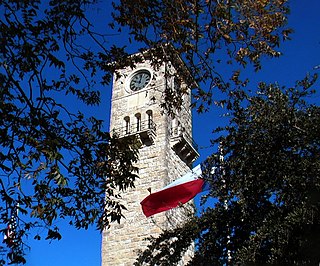
Fort Sam Houston is a U.S. Army post in San Antonio, Texas. Known colloquially as "Fort Sam," it is named for the U.S. Senator from Texas, U.S. Representative from Tennessee, Tennessee and Texas governor, and first president of the Republic of Texas, Sam Houston.
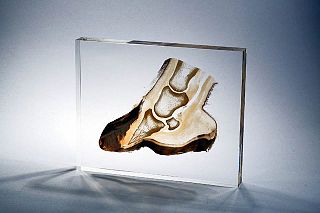
Plastination is a technique or process used in anatomy to preserve bodies or body parts, first developed by Gunther von Hagens in 1977. The water and fat are replaced by certain plastics, yielding specimens that can be touched, do not smell or decay, and even retain most properties of the original sample.
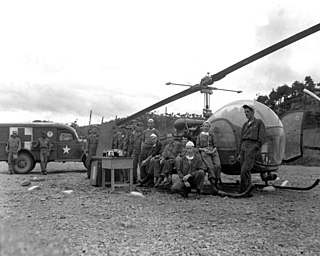
Mobile Army Surgical Hospitals (MASH) were U.S. Army field hospital units conceptualized in 1946 as replacements for the obsolete World War II-era Auxiliary Surgical Group hospital units. MASH units were in operation from the Korean War to the Gulf War before being phased out in the early 2000s. Each MASH unit had 60 beds, as well as surgical, nursing, and other enlisted and officer staff available at all times. MASH units filled a vital role in military medicine by providing support to army units upwards of 10,000 to 20,000 soldiers. These units had a low mortality rate compared to others, as the transportation time to hospitals was shorter, resulting in fewer patients dying within the "Golden Hour", the first hour after an injury is first sustained, which is referred to in trauma as the "most important hour". The U.S. Army deactivated the last MASH unit on February 16, 2006, and the successors to Mobile Army Surgical Hospitals are combat support hospitals.

The Royal College of Surgeons of England is an independent professional body and registered charity that promotes and advances standards of surgical care for patients, and regulates surgery and dentistry in England and Wales. The college is located at Lincoln's Inn Fields in London. It publishes multiple medical journals including the Annals of the Royal College of Surgeons of England, the Faculty Dental Journal, and the Bulletin of the Royal College of Surgeons of England.
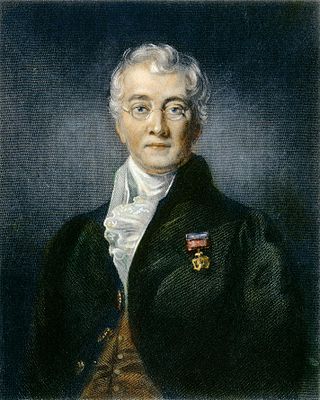
Sir Charles Bell was a Scottish surgeon, anatomist, physiologist, neurologist, artist, and philosophical theologian. He is noted for discovering the difference between sensory nerves and motor nerves in the spinal cord. He is also noted for describing Bell's palsy.

The Library of the Surgeon General's Office, later called the Army Medical Library, was the institutional medical literature repository of the U.S. Army Surgeon General from 1836 to 1956 when it was transformed into the National Library of Medicine.

The Madigan Army Medical Center, located on Joint Base Lewis-McChord just outside Lakewood, Washington, is a key component of the Madigan Healthcare System and one of the largest military hospitals on the West Coast of the United States.
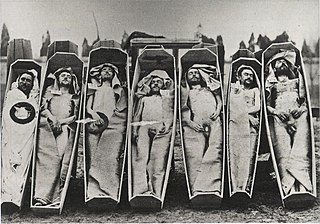
A cadaver or corpse is a dead human body. Cadavers are used by medical students, physicians and other scientists to study anatomy, identify disease sites, determine causes of death, and provide tissue to repair a defect in a living human being. Students in medical school study and dissect cadavers as a part of their education. Others who study cadavers include archaeologists and arts students. In addition, a cadaver may be used in the development and evaluation of surgical instruments.

The Siriraj Medical Museum, nicknamed the Museum of Death, is a medical museum in Bangkok, Thailand. Siriraj Medical Museum is open to the public and is a valuable resource for medical professionals and students. This museum consists of seven small medical museums: Siriraj Bimuksthan Museum, Ellis Pathological Museum, Congdon Anatomical Museum, Songkran Niyomsan Forensic Medicine Museum, Parasitological Museum, Touch Museum in Honor of Queen Mother Sirikit, and Sood Sangvichien Prehistoric Museum Laboratory.
The Musée d'Anatomie Delmas-Orfila-Rouvière was a museum of anatomy formerly located on the eighth floor of the Faculty of Medicine, Paris V René Descartes University, 45, rue des Saints-Pères, 6th arrondissement of Paris, France. It was the largest anatomy museum in France. It was closed around 2005, with all its exhibits going into storage.

The Hunterian Museum is a museum of anatomical specimens in London, located in the building of the Royal College of Surgeons of England.

Anita Rosalie Newcomb McGee was an American medical doctor who is remembered for her work with the United States military.

The University History Museum of the University of Pavia is a museum displaying memorabilia related to the history of the university, particularly in the fields of physics and medicine, when students were taught by prominent scholars such as Antonio Scarpa and Camillo Golgi or the physicist Alessandro Volta.

The Boston Medical Library of Boston, Massachusetts, was originally organized to alleviate the problem that had emerged due to the scattered distribution of medical texts throughout the city. It has evolved into the "largest academic medical library in the world".
Todd E. Rasmussen, MD, FACS is an American professor and Vice Chair for Education in the Department of Surgery at Mayo Clinic, Rochester, and a Senior Associate Consultant in the Division of Vascular and Endovascular Surgery. Prior to joining the Mayo Clinic, he had a 28-year career in the military, retiring as an Air Force Colonel in 2021. His most recent military assignment was as Associate Dean or Research at the Uniformed Services University of the Health Sciences and an attending surgeon at the Walter Reed National Military Medical Center.

A medical museum is an institution that stores and exhibits objects of historical, scientific, artistic, or cultural interest that have a link to medicine or health. Displays often include models, instruments, books and manuscripts, as well as medical images and the technologies used to capture them. Some museums reflect specialized medical areas, such as dentistry, nursing, this history of specific hospitals, and historic pharmacies.
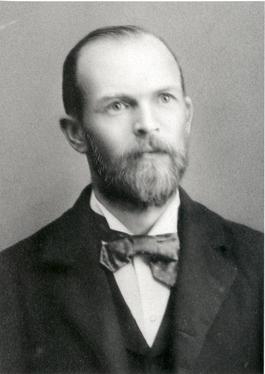
William Keiller was a Scottish born anatomist who trained in anatomy at the Edinburgh Extramural School of Medicine and was appointed as the first Professor of Anatomy at the University of Texas Medical Branch (UTMB) at Galveston, a post he held for 40 years. He served as Dean of the UTMB Medical School and as President of the Texas Medical Association. Many of his anatomical drawings and paintings are preserved and displayed at the Blocker History of Medicine collection at UTMB Moody Medical Library.
The Visible Embryo Project (VEP) is a multi-institutional, multidisciplinary research project originally created in the early 1990s as a collaboration between the Developmental Anatomy Center at the National Museum of Health and Medicine and the Biomedical Visualization Laboratory (BVL) at the University of Illinois at Chicago, "to develop software strategies for the development of distributed biostructural databases using cutting-edge technologies for high-performance computing and communications (HPCC), and to implement these tools in the creation of a large-scale digital archive of multidimensional data on normal and abnormal human development." This project related to BVL's other research in the areas of health informatics, educational multimedia, and biomedical imaging science. Over the following decades, the list of VEP collaborators grew to include over a dozen universities, national laboratories, and companies around the world.

Paul Ivan Yakovlev was a Russian-American neuroanatomist who worked at Harvard Medical School. He is the namesake of the Yakovlevian torque, an asymmetry of human brains. He made contributions in the "origins of the frontopontine tract in humans, neurocutaneous syndromes and epilepsy, neuronal substrates and epilepsy, schizencephaly, arhinencephalia, mental retardation, decussation of the bulbar pyramidal tract, frontal lobotomies, the limbic cortex, the time of myelination and the anatomy of the limbic cortex, corpus callosum, and thalamus, and two classic anatomical atlases."

























